Using the following sequence of methods I was able to get a rough approximation. It is a very simple solution and might not work for all cases.
1. Morphological operations
To merge neighboring lines perform morphological (dilation) operations on the binary image.
img = cv2.imread('image_path', 0) # grayscale image
img1 = cv2.imread('image_path', 1) # color image
th = cv2.threshold(img, 150, 255, cv2.THRESH_BINARY)[1]
kernel = cv2.getStructuringElement(cv2.MORPH_ELLIPSE, (19, 19))
morph = cv2.morphologyEx(th, cv2.MORPH_DILATE, kernel)

2. Finding contours and extreme points
My idea now is to find contours.
Then find the extreme points of each contour.
Finally find the closest distance among these extreme points between neighboring contours. And draw a line between them.
cnts1 = cv2.findContours(morph, cv2.RETR_EXTERNAL, cv2.CHAIN_APPROX_SIMPLE)
cnts = cnts1[0] # storing contours in a variable
Lets take a quick detour to visualize where these extreme points are present:
# visualize extreme points for each contour
for c in cnts:
left = tuple(c[c[:, :, 0].argmin()][0])
right = tuple(c[c[:, :, 0].argmax()][0])
top = tuple(c[c[:, :, 1].argmin()][0])
bottom = tuple(c[c[:, :, 1].argmax()][0])
# Draw dots onto image
cv2.circle(img1, left, 8, (0, 50, 255), -1)
cv2.circle(img1, right, 8, (0, 255, 255), -1)
cv2.circle(img1, top, 8, (255, 50, 0), -1)
cv2.circle(img1, bottom, 8, (255, 255, 0), -1)
(Note: The extreme points points are based of contours from morphological operations, but drawn on the original image)

3. Finding closest distances between neighboring contours
Sorry for the many loops.
First, iterate through every contour (split line) in the image.
Find the extreme points for them. Extreme points mean top-most, bottom-most, right-most and left-most points based on its respective bounding box.
Compare the distance between every extreme point of a contour with those of every other contour. And draw a line between points with the least distance.
for i in range(len(cnts)):
min_dist = max(img.shape[0], img.shape[1])
cl = []
ci = cnts[i]
ci_left = tuple(ci[ci[:, :, 0].argmin()][0])
ci_right = tuple(ci[ci[:, :, 0].argmax()][0])
ci_top = tuple(ci[ci[:, :, 1].argmin()][0])
ci_bottom = tuple(ci[ci[:, :, 1].argmax()][0])
ci_list = [ci_bottom, ci_left, ci_right, ci_top]
for j in range(i + 1, len(cnts)):
cj = cnts[j]
cj_left = tuple(cj[cj[:, :, 0].argmin()][0])
cj_right = tuple(cj[cj[:, :, 0].argmax()][0])
cj_top = tuple(cj[cj[:, :, 1].argmin()][0])
cj_bottom = tuple(cj[cj[:, :, 1].argmax()][0])
cj_list = [cj_bottom, cj_left, cj_right, cj_top]
for pt1 in ci_list:
for pt2 in cj_list:
dist = int(np.linalg.norm(np.array(pt1) - np.array(pt2))) #dist = sqrt( (x2 - x1)**2 + (y2 - y1)**2 )
if dist < min_dist:
min_dist = dist
cl = []
cl.append([pt1, pt2, min_dist])
if len(cl) > 0:
cv2.line(img1, cl[0][0], cl[0][1], (255, 255, 255), thickness = 5)

4. Post-processing
Since the final output is not perfect, you can perform additional morphology operations and then skeletonize it.




